Our Story
Today, Dance Performance Training provides Artistic Athletes with the tools they need to succeed and perform at their highest level while reducing pain and injury.
We have spent years helping hundreds of dancers recover from injuries, heighten their performances, and stay fit, healthy and happy through dance-specific cross training and rehabilitation.
By working with us, you can improve your technique, prevent injury setbacks, and achieve your standout performance with total comfort and confidence.
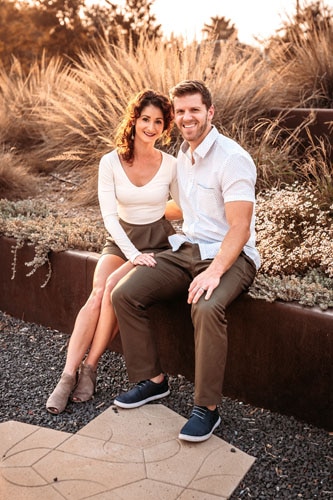
We know from personal experience how dancers push their bodies to the extreme everyday – so it’s no surprise that injury is so common in our sport. We know there’s nothing worse than being told you might have to stop dancing and put your passion on hold.
If you’ve ever suffered an injury or setback in your dance career or just can’t reach your desired level of performance – we know exactly what you’re going through. We’ve quite literally lived your pain. That’s why we’re here to make sure no dancer has to endure the same struggle without the right techniques and guidance.
Our unique, dance-specific cross training helps you work the parts of your body neglected by traditional dance practice so you can achieve a stronger core, better placement, higher extension, effortless jumps and increased mobility. Along with our specialist support and dedicated injury rehab programs, you’ll get everything you need to build a long and successful career doing what you love.
Our unique set of skills, combined with a specialist background in dance, make us the perfect duo to help you extend your dancing years, reduce the risk of injury and achieve your artistic goals.
Scott’s always had a passion for fitness and learning how the different parts of the body interact – so it made sense that his journey saw him start as a Personal Trainer in 2009, earn a BS in Exercise Science in 2010 and then become a Doctor of Physical Therapy in 2014.
He’s been working with athletes since becoming a Doctor of Physical Therapy, but his focus shifted to performing artists when he met Nicole in 2016 and realized how much misinformation and misdirection was being given to Artistic Athletes. He saw the same, avoidable injuries time and time again, and knew typical ‘rehab’ just wasn’t enough.
By shifting the focus to prevention and exploring his passion for performance enhancing resistance training, Scott is transforming the physical fitness and performance of Artistic Athletes everywhere.
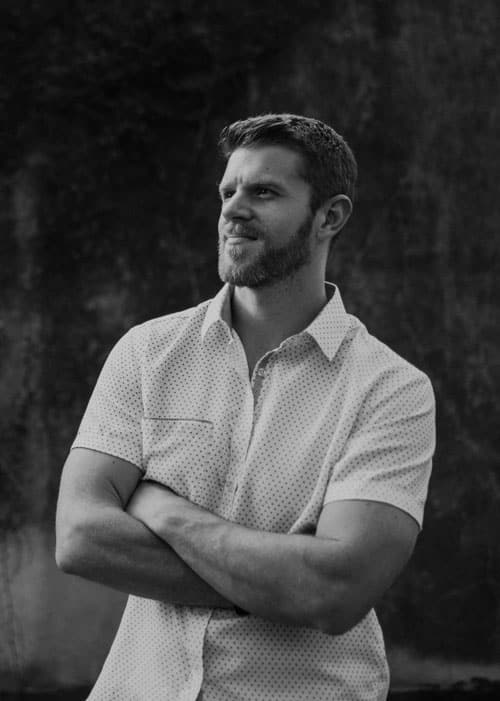

Nicole has had a passion for ballet since she was 8 years old, spending 4-5 hours dancing 6 days a week. After high school, she continued her love for dance at the University of Oklahoma, on a full scholarship, before moving on to the Joffrey Ballet School in NYC.
In 2008, Nicole began her professional ballet career performing all over the globe, and, just 7 years later, was a First Soloist at the Sarasota Ballet Company. She was featured in Pointe Magazine’s Stars of the Corps and was making incredible progress on her journey as an Artistic Athlete. But it wasn’t all positive…
Throughout her career, Nicole battled against repeat injuries and constant pain. After countless missteps and substandard advice from medical professionals, she resigned herself to dancing through the pain. She feared her injuries would prevent her from continuing to perform – but then everything changed when she met Scott…

When I think back to the little girl that dreamed of becoming a professional ballerina, I know I’ve been fortunate enough to achieve the majority of my professional goals – but it wasn’t without plenty of obstacles along the way.
If you’re anything like me, you’ve probably suffered numerous setbacks from injuries. You may have struggled mentally and emotionally. I hope by sharing my journey, you’ll learn that there’s a better way to train that improves your dancing, protects your body from injury, and gives you more time to enjoy life.
In 2015 I was splitting my time between two of my true loves – performing and teaching ballet! On the surface, it might have looked like I was living the dream – but underneath I was hiding painful injuries that were dragging down my performance and leading me to worry about my future in dance.
Like so many dancers at this level, I was managing all kinds of injuries linked to overuse – from achilles issues and slipped discs to pinched nerves and ligament sprains. Things were so bad, I even had to apply a hot pack to my ankles every morning just so I could ease the pain enough to get out of bed and slide down the stairs on my backside (yes, seriously…)
What’s worse – I had to hide my problems in order to keep the parts I’d worked so hard to earn. I was consistently getting cast for high-level roles that demanded athletic jumps, flexibility, and strength, so I was living in constant fear that my Directors would remove me from the shows if they knew how much pain I was in.
During one of my many flare-ups, I was offered the chance to perform a notoriously difficult solo in “Nureyev’s Raymonda”. This was a fantastic opportunity – the kind that every dancer works for – but my injuries had put a downer on what should have been a truly memorable moment.
I knew that if I stopped dancing – even for a small amount of time – my Directors would start to lose faith in me and doubt my fitness. I was acutely aware that if they didn’t feel confident in my ability to consistently perform, I’d risk losing the role.
All I wanted was to be able to dance without pain dragging me down. I found myself asking the same question that you might be thinking right now… Why does it always seem like I have to choose between my health and my dancing? No matter how much I followed the recommendations I was given, I still had the same flare ups.
If you’ve managed injuries as a performer, you’ll know how hard it is to find someone that understands the struggle of dancers. I saw numerous healthcare providers, chiropractors, orthopedic doctors, physical therapists, and more – with zero results.
I tried everything from needles, lasers, medications, cast boots (seriously not fun!) and even considered surgery when things were at their worst. Everyone gave me conflicting information and some even suggested the unthinkable – giving up dancing for good.
Alongside the endless search for a solution and ever-rising healthcare costs, my family also began to question my decision to keep dancing through the physical and emotional strain. Thing is, in my heart, I knew it would all be worth it if I could get back on stage doing what I love.
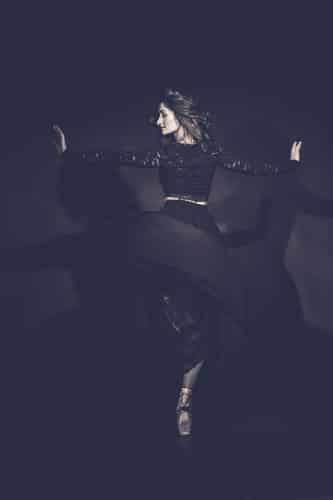
It wasn’t even the excruciating pain that kept me up at night, it was the thought of no longer being able to dance. Even if I managed to make a comeback from injury, how much would my progress have suffered? Would my Directors have lost faith in me? Would they trust me on stage? Would I ever be the same again?
Following all the wrong advice was adding to my injuries and, with no choice but to keep pushing through the pain, my long-term recovery was becoming less likely.
I felt completely lost, asking myself “can this be it, even after working my entire life?”. If you’ve ever been in a similar position, you might be able to relate to the fear of losing your income, passion and even your identity as an Artistic Athlete.
I was at my lowest point. Fear and frustration were getting the better of me. To be completely honest, I felt like giving up on my recovery. I never wanted to stop dancing, but I was overwhelmed with all the ineffective advice and was starting to accept life with constant pain as my new normal. I was prepared to just push through at any cost.
But then I met Scott…
As a physical therapist, Scott took a keen interest in my situation from day one. (After all, I was sporting a big boot on our first date!) He began paying attention to the care I was receiving from other specialists and was shocked to see first hand my disappointing results and a lack of understanding from medical professionals of what dancers really needed.
Scott began learning all about dance and eventually introduced me to his own method of rehabilitating athletes. I saw immediate results that were nothing short of life changing.
One of the first movements Scott introduced involved me putting on a weight vest. To be honest, I thought he was crazy! After everything I’d been through, I wondered how this could possibly help – but these types of subtle changes ended up making all the difference. Soon after, I was able to get out of bed with no hot packs (and trust me, that was a bit of a miracle at the time!)
This was my first introduction to “dance-specific cross training” – the missing piece of the puzzle that helped me regain my strength, eliminate my chronic injuries, and allowed me to dance even better – without the pain.
What made things different with Scott was the time he took to learn all about my injuries and how they affected my dancing. Unlike everyone else, it was like he had a laser focus on getting me off the sidelines and back on stage. He observed classes, researched techniques and built an in-depth understanding of dance mechanics and the demands they put on Artistic Athletes.
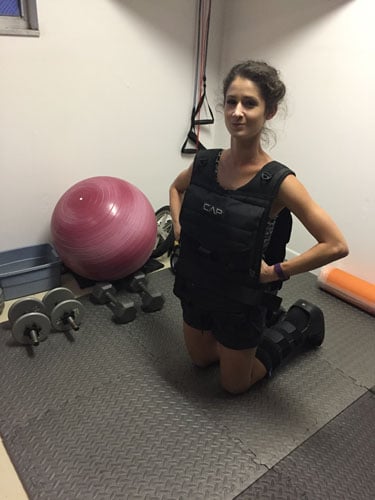
After seeing the results of dance-specific cross training in my own body, I insisted that Scott share his techniques with my colleagues that were dealing with similar issues. If it could put an end to my injury nightmare, it could help them, too.
Scott quickly developed a passion for helping Artistic Athletes overcome their injuries and began applying his specialist knowledge to dance. My friends couldn’t believe how quickly they were recovering from injuries they’d been suffering with for years.
That’s when we knew we were onto something. In the back of my mind, I couldn’t stop wondering how my career (and my life!) could have been improved if I’d known this from the start…
As time went on, we began to work with different dance companies and schools to get our training in front of as many dancers as possible. We wanted to tackle all the misconceptions and finally treat dancers like the Artistic Athletes they are.
We first shared our workouts on Instagram as a way to reach new dancers and publicize the unique, effective method of training we’ve spent years developing.
Now, just a few years later, we’ve transformed the lives of hundreds of Artistic Athletes through our rehab sessions, full body programs and in app video support. Our community of like-minded dancers are all sharing a journey to reach their full potential.
After retiring from dancing full time, I had the opportunity to guest appear on a production of “The Nutcracker”. To be honest, I was expecting to struggle back on stage – but I found I was fitter than ever!
I was able to reach my peak performance with only two studio sessions a week – alongside short and effective dance-specific cross training workouts that have kept me in the best shape of my life.
These methods truly work, not only for me but for hundreds of dancers that have taken our programs. They’ve managed to prevent injury, improve their physique and take their performance to the next level.
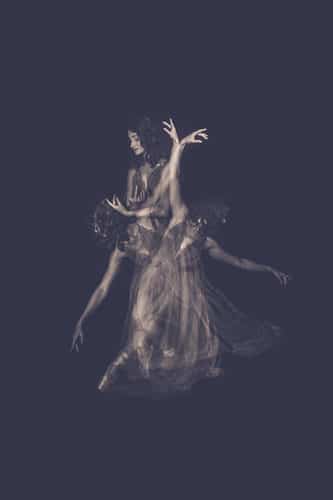
Review the information below to find out which track is the right one for you. You can also watch this video that walks you through the options.
Once you have chosen your track you can submit the form at the bottom of this page. Select one and only one option, please.
If you have access to equipment such as free weights, any cardio equipment (rower, stairs, treadmill, bike, etc.), and other things common in a fitness center, “Group 1” is for you!
If you’re primarily doing this at home, with resistance bands (though a few small weights can easily be added if you have them), but still can use stairs, bike, run, or have some cardio equipment access, select “Group 2”
Lastly, If you don’t like to run, and don’t have access to any cardio (no stairs, bikes, or lap pools) then the last option is for you! “Group 3”
This program is made specifically for the demands of male dancers, taking into account some extra work for upper body to support partnering, extra stability for the lower back, etc. This option is similar to group 1 in terms of equipment need.
No track is better than the other, you will get results regardless. You can find more information about the equipment requirements for each track by scrolling down.